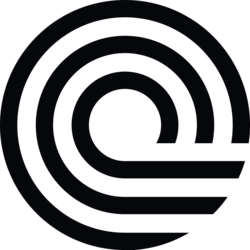Artificial intelligence (AI) can be trained to see details in images that escape the human eye, and an AI neural network identified something unusual about a face in a Raphael painting: It wasn't actually painted by Raphael.
AI Unveils a Hidden Detail
The capabilities of AI continue to astonish us as researchers delve into the realm of art history. In a recent development, an AI neural network has uncovered an extraordinary revelation in a famous Raphael masterpiece. The technology was able to detect a detail that had been overlooked by art historians for centuries.
The painting in question, believed to be the work of Raphael, has long been hailed as a masterpiece of the Renaissance period. However, the AI neural network's analysis revealed a discrepancy that challenges the traditional attribution of the artwork to the renowned artist.
Unmasking the Mystery
By leveraging advanced algorithms and machine learning techniques, the AI system was able to scrutinize the painting at a level of detail that surpasses human perception. It identified a subtle deviation in the style and technique of a specific element within the artwork, prompting a reevaluation of its origins.
The revelation that a particular face in the painting was not executed by Raphael himself raises intriguing questions about the true authorship of the piece. This discovery underscores the potential of AI to uncover hidden truths and reshape our understanding of artistic masterpieces.
Implications for Art History
The implications of this AI-driven discovery extend beyond the realm of individual artworks. As art historians grapple with the authenticity and provenance of countless pieces in museums and private collections, the use of artificial intelligence offers a powerful tool for discerning subtle nuances that may elude the human eye.
By harnessing the analytical prowess of AI, experts can unravel long-standing mysteries surrounding the creation and attribution of artworks, shedding new light on the evolution of artistic movements and the legacy of renowned artists.
Challenging Conventional Wisdom
The conventional wisdom surrounding the authorship of historical artworks is often based on a combination of stylistic analysis, provenance research, and expert opinion. However, the emergence of AI as a tool for art analysis introduces a new dimension to the field, challenging established narratives and inviting fresh perspectives.
As technology continues to advance, AI systems may become indispensable allies to art historians, offering a systematic and data-driven approach to unraveling the complexities of the art world and redefining our understanding of artistic genius.
Redefining Artistic Attribution
The discovery that a face in a Raphael painting was not crafted by the master himself prompts a reassessment of the traditional methods used to attribute authorship to works of art. While human connoisseurs rely on intuition and expertise, AI brings a level of objectivity and precision that can uncover hidden truths.
Artistic attribution is a complex and sometimes contentious issue in the art world, with debates often centering on subtle stylistic nuances and historical documentation. The integration of AI into this process offers a revolutionary approach that combines data-driven analysis with human expertise.
Future Directions in Art Analysis
Looking ahead, the intersection of AI and art analysis promises to unlock a wealth of insights and discoveries that may reshape the landscape of art history. By harnessing the capabilities of machine learning and neural networks, researchers can delve deeper into the mysteries of renowned artworks and unearth hidden details that have long eluded detection.
As AI technology continues to evolve, its potential to revolutionize the field of art history becomes increasingly apparent. By collaborating with artificial intelligence, art historians can embark on a journey of exploration and reinterpretation that transcends the boundaries of traditional scholarship.
If you have any questions, please don't hesitate to Contact Us
Back to Technology News
















































